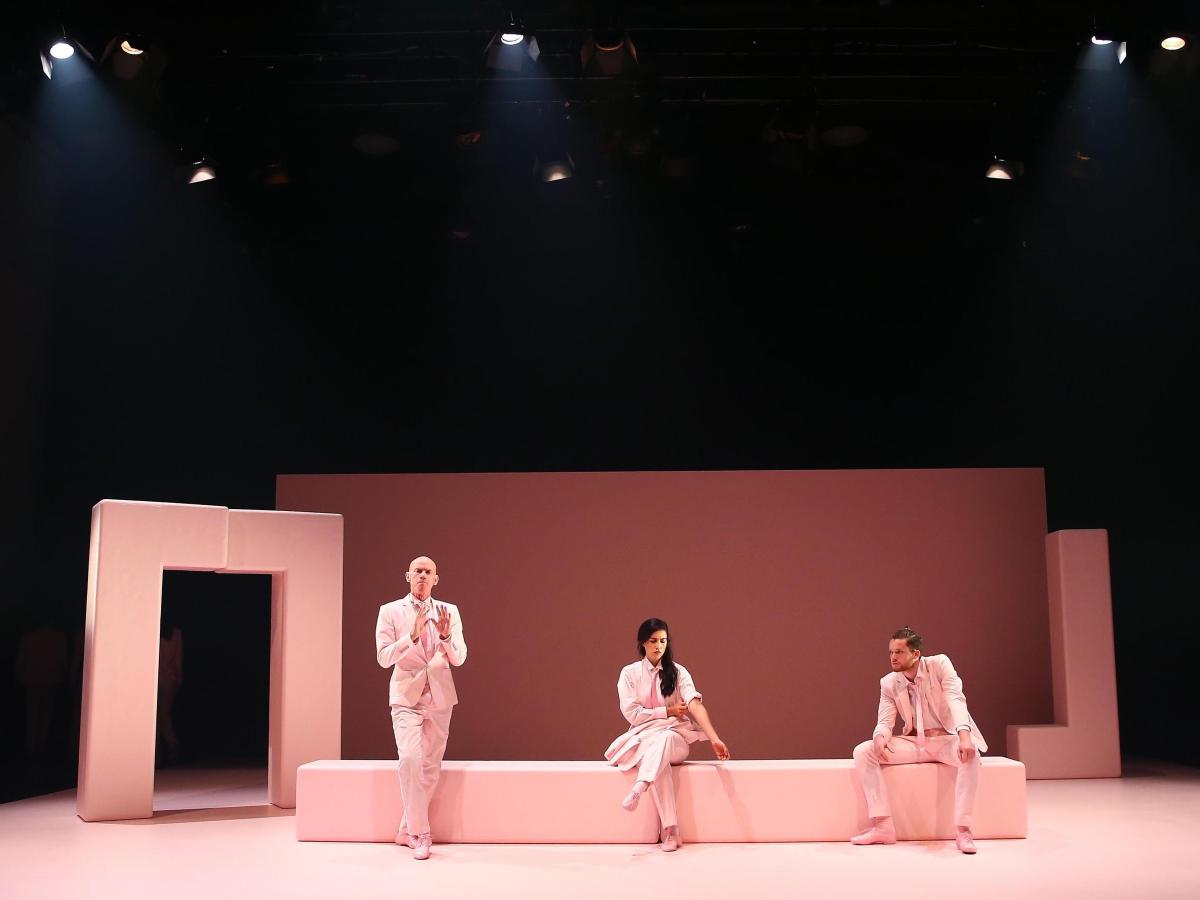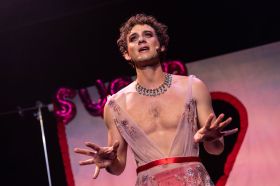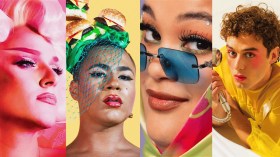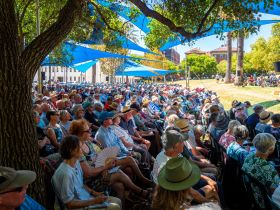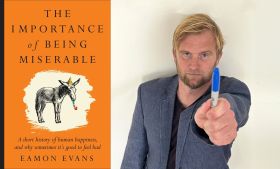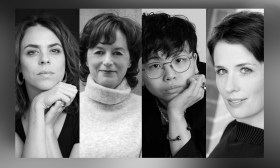The 2014 NIDA production Choreography. Photographer: Don Arnold.
Sets, costumes, lighting: there are many design careers available in the arts.
The secret to kick-starting your career is to jump in and start building your skill set.
Some of designer Michael Hankin’s greatest learning experiences have happened on the job, when things didn’t go exactly to plan, so he advises aspiring designers to take on any opportunities that come their way and give it a go.
‘You need to work really hard in the industry and just keep at it because you learn so much on job and through practical experience.’
On other occasions, the unconscious provided the key to a great design moment. ‘Don’t underestimate the times when you’re sitting on the train, looking out the window and imaginatively thinking. You’re letting your ideas percolate. I prepare and investigate my thoughts, and then I go into my studio and start to create the image I see in my mind. I then begin sketching, drafting plans, model making, painting, sourcing references images – whatever the project requires,’ he said.
But for Hankin, a practicing Set and Costume Designer and lecturer at the National Institute of Dramatic Art (NIDA), these learning experiences are possible because he had a good foundational training.
Hankin went straight from school to study Set and Costume Design at NIDA. The course he did has now developed into the Bachelor of Fine Arts (Design for Performance), and there is now a fourth year option for students and mid-career artists wishing to complete a Master of Fine Arts (Design for Performance) too. ‘That didn’t exist when I was there, otherwise I would have loved to further my study, making for a richer learning experience,’ said Hankin.
He is grateful for the pathway NIDA gave him into the industry.
‘I learned so much when I was there. After graduating, my introduction to the industry began by assisting a number of Australia’s finest designers and NIDA graduates, such as Ralph Myers, Alice Babidge, Peter England and Michael Scott-Mitchell, who is currently NIDA’s Head of Design for Performance.
‘All the while, I was designing my own shows with the talented directors with whom I met and studied alongside at NIDA, including Imara Savage, Sarah Giles and Kip Williams – my learning continued along a smooth line, from my training through to the industry.’
For aspiring designers, that smooth transition from study to industry is dependent on plenty of practical experience.
Bachelor of Fine Arts Design for Performance students at NIDA have many opportunities to flex their creative muscles during the three-year course. These projects include: the curation, management and design of an exhibition at NIDA, a music video for a triple j Unearthed artist, a short film for submission into festivals, and the set, costume and lighting design for graduate student productions.
Working under the guidance of guest industry artists on annual NIDA play productions give first-year students an apprenticeship-like experience, and industry placements undertaken during third year give the students invaluable experience within a major arts organisation.
At a graduate level, students have access to an industry professional mentor and lead the design process on two NIDA productions in collaboration with a guest director. They also undertake an international field trip to broaden their experience beyond Australia.
Part of the challenge is to ensure students are trained in a broad spectrum of design skills to ensure they can work on any project that comes their way, whether that be for theatre, events, television and film, festivals, photo shoots, and the list goes on.
Hankin said the role of the set/costume designer is often poorly understood as: ‘it’s a brilliantly multi-faceted art form. The creative team work behind the scenes, so it’s often invisible to the untrained eye. Some people assume set design is simply about realism or that costume design is about creating beautiful gowns. But contemporary performance design in Australia often has another layer of sophistication and imagination. For example, most of my work in theatre, opera, dance and art installation is interested in a form of (what I call!) essentialism – a space that is simplified, evocative and essential to the story we’re telling. Performance Designers are storytellers who bring to life the world in which the characters live, illuminating the text and performance.’
His training has enabled Hankin to succeed in a job he adores and also be deeply aware of the importance of the designer within the creative process.
‘I absolutely love it, however, that’s not to say the job isn’t difficult at times. Some projects are years in the making, others are prepared in just a few hours. The job is very technical with precise communication, and other times you need to be instinctual, responding to what ‘feels right’. Some mornings I put together spread sheets and draft architectural plans, and in the afternoon I’m splattering fake blood on a shirt. You certainly need the passion, and I simply love the eclecticism of shifting from project to project: from working on a gritty, contemporary Australian play, to a seventeenth century French farce, then an art installation as part of a dance piece.’
‘At the moment I am fortunate enough to be designing three classics – Othello for Bell Shakespeare, Twelfth Night for Belvoir St Theatre, and Tartuffe for the State Theatre Company in South Australia. I’m sharing rooms with some of the best actors in Australia as well as some of the best Directors, Lighting Designers, Composers, Production Managers, Costume and Prop-Makers, Set Constructors, Scenic Painters. We share the same language and it’s an incredibly collaborative and rewarding process’.

